
As COVID warps our lives in the summer of 2021, it continues to take its toll on media usage. You’re seeing more and more research from companies inside and outside broadcasting, trying to assess how consumer lifestyles are changing the ways, places, and locations where they’re choosing to entertain and inform themselves.
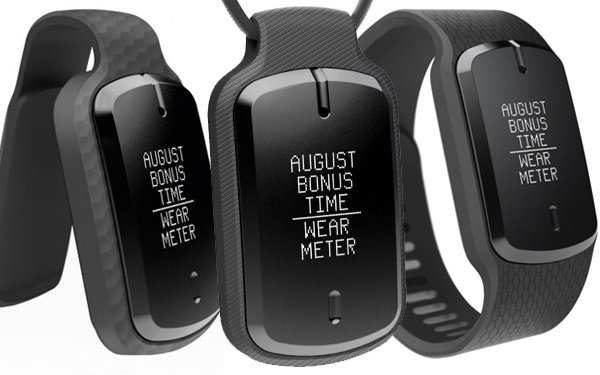
Now Nielsen is stepping into the fray. Last week they introduced new wearables they’ll begin to beta starting next month. These wristbands, clip-ons, and pendants are a quantum improvement over the current devices that have always resembled outdated pagers. This new generation of gadgets will not be in the Louis Vuitton fall catalogue, but they are clearly a step in the right direction.
Overall, 3,000 of these new-look meters will be integrated into the 60,000 person database, and we’ll know the results next year. You’d like to hope younger people in the sample will have the green light to personalize them, should they choose to, in much the same way stickers have become commonplace on the top lids of laptops.
Now that the ratings may do a better job keeping up with the times, let’s turn our attention to radio programming during our pandemic-dominated times. We’ve discussed how virtually every format adheres to the 25-54 boundary line. And the impact that has on the diversification on formats.
Sadly, consolidation has not really yielded much in the way of creativity or innovation when it comes to developing new formats designed to reach new audiences. And while some owners tell me the key is more deregulation, allowing them to own every station in a market, I’ll believe it when I see it.
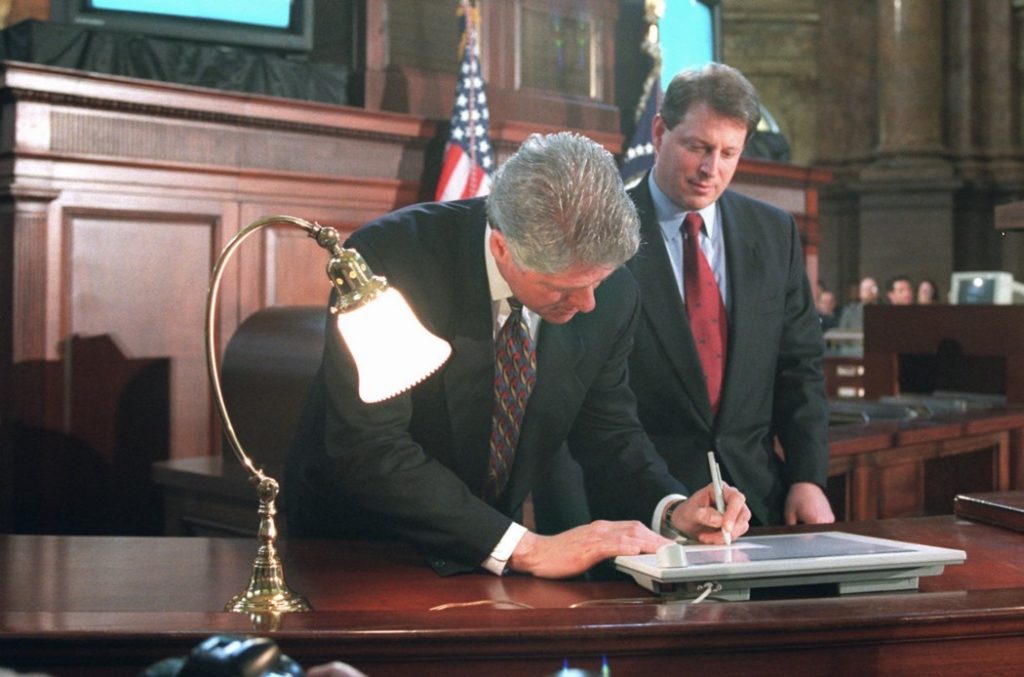
We’re “celebrating” a radio milestone this year, although I don’t think you heard any special themed weekends or the handing out of awards or plaques. Last February marked the 25th anniversary of the Telecommunications Act of 1996, the law that ushered in the current state of affairs in radio.
Unfortunately for the radio industry, that event coincided with the emergence of the World Wide Web, the start of audio streaming, the invention of portable MP3 players, and the advent of satellite radio. In retrospect, a perfect storm of events.
Bill Clinton (with VP Al Gore standing by) signed that bill into law in February of ’96. Five years later, I got to see Clinton speak at the Radio & Records Convention after he left office.
He had a lot to say about radio, especially when he barnstormed his home state of Arkansas during his gubernatorial campaigns. Clinton typically pulled into small towns, headed to the local radio station, and got behind the mic to schmooze, campaign, and hang out.
At the R&R affair, he explained one of his biggest laments about bills he signed into laws was the Telecommunications Act of ’96. He expressed concerned it would threaten radio’s localism and community service.
Here we are in 2021 in the middle of an audio renaissance, trying to figure out broadcast radio’s place in the ecosphere. Last week, Podcast Movement celebrated its ninth annual conference in Nashville. This event first came to the fore in 2014, funded by a Kickstarter campaign. Less than a decade later, more people attend Podcast Movement than the Radio Show. And while demand for radio inventory remains tepid even in this COVID bounce-back year, the passion for big name sponsors to throw money at podcasts – largely without reliable metrics – is unrelenting.

Last week, Saga CEO Ed Christian took time in his earning’s call to castigate his broadcast fraternity for dropping the “R-word” in their company names. As reported by Radio Ink, Christian made this telling comment that sums up how the industry is often at loggerheads with itself:
“It amazes me how strong radio companies have decided to change their name from radio…We’re recognized in the communities we serve.” Christian says moving away from radio makes no sense…Changing your name doesn’t change what you do in your community. I don’t get it. We are radio. We’re not going to change our name.”
Ed’s comment goes to the heart of the matter – 100 years after radio’s invention, we don’t know what to call it. You may accuse of me of over-simplifying the issue, but it symbolizes the industry dilemma. What is the medium’s purpose in the midst of all this content and options? Where does it fit in the audio entertainment spectrum?
Christian’s remarks reminded me of something another radio veteran recently said. Departing KROQ midday icon, Kat Corbett, had a lot to say as she headed for the exits. Her blog announced her departure, aptly titled “Ch-Ch-Changes.” Displaying her passion for her craft, Corbett celebrated the contributions her “Local Only” show made on the Southern California music scene.
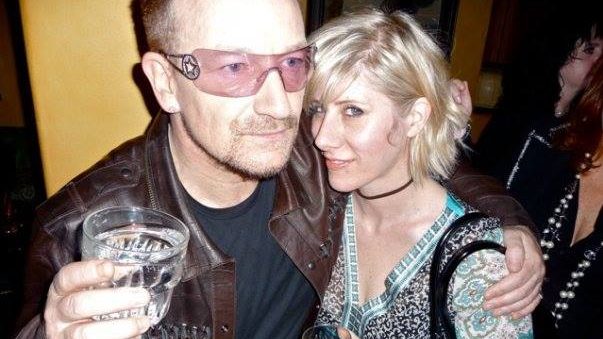
Graciously, Kat thanks the sales reps who managed to lasso sponsors for her show, as well as her former managers, colleagues, and staffers – and of course, her listeners.
But it was this quote in Variety sent to me that’s been pinballing in my head for two weeks:
“Right now I think alternative radio in general, and not just KROQ, I’m talking across the board, every single outlet is in a state of they don’t know what the hell is going on,” she said. “I think they’re deluding themselves if they think the kids are coming to radio. Kids don’t know what radio is, and they don’t care. And so now you’re alienating your audience by getting rid of all music. Also there’s this big thing, and again across the board in all alternative, where they’re, frankly, pushing hip-hop and pop as alternative, because those two genres, that’s where the money’s at. But the genre is just demolished. I don’t know how to fix it, but it’s just not its own thing anymore.”
The struggle Corbett thinks about to recapture the heart and soul of Alternative isn’t just a problem faced by her former employer – it’s become an industry-wide conversation. As has been the case for more than three decades, the lines frequently get blurred. Many stations in the format have redefined those guard rails liberally. Sometimes, the results have been interesting. Sometimes, not so much.
But Corbett’s comments transcend the music, and zero in on two key issues.
First, have “kids” abandoned the medium to a point where stations that include them in their focus are destined to be disappointed by the results?  Our research clearly shows fewer and fewer have radios where they live. And the car is now cluttered with streaming options, thanks to the inclusion of Bluetooth in virtually every new vehicle that rolls off an assembly line. Corbett’s is a fair point when you consider how few choices there are for teens in most markets, especially when you take into account the percentage of Gen Z’s in America, far greater than the number of stations that attempt to cater to them.
Our research clearly shows fewer and fewer have radios where they live. And the car is now cluttered with streaming options, thanks to the inclusion of Bluetooth in virtually every new vehicle that rolls off an assembly line. Corbett’s is a fair point when you consider how few choices there are for teens in most markets, especially when you take into account the percentage of Gen Z’s in America, far greater than the number of stations that attempt to cater to them.
Corbett’s second sticking point occurs at the end of the quote where she questions whether there’s a genre left called “Alternative.” Her point is that Hip-Hop and Pop have superseded Alternative’s size, scope, and influence. And perhaps that’s why programmers are including these musical genres on stations that call themselves “ALT.”
But it’s been that way for a while, even in Los Angeles where other formats overshadow Alternative – and traditionally have. But perhaps it’s the difference between genre…and lifestyle that has me stuck.
Genres have been eroding since the iPod came on the scene, followed closely by playlist platforms like Pandora and Spotify. It used to be that when you’d ask the average person to name their favorite kind of music, they’d instantly blurt out their answer:
Rock, Jazz, Pop, Big Band, Oldies, Country, Rap, etc.
But in recent years, the response is more likely to be:
“I have eclectic tastes. I like lots of different music.”
And that’s largely true.
But when your research devolves down to mostly testing songs in an effort to come up with that “safe list” of a couple hundred core titles, stations miss the mark. Music has been commoditized – by iTunes, Spotify, Pandora, and the myriad other playlist platforms that have become ubiquitous.
The music genres listed in the graphic at the top of this post aren’t just music genres.
They are lifestyles.
And when radio stations narrowly focus on just their music – often at the expense of personality, events, and community efforts, they begin to paint themselves into formatic corners, narrowing the appeal they may have once enjoyed.
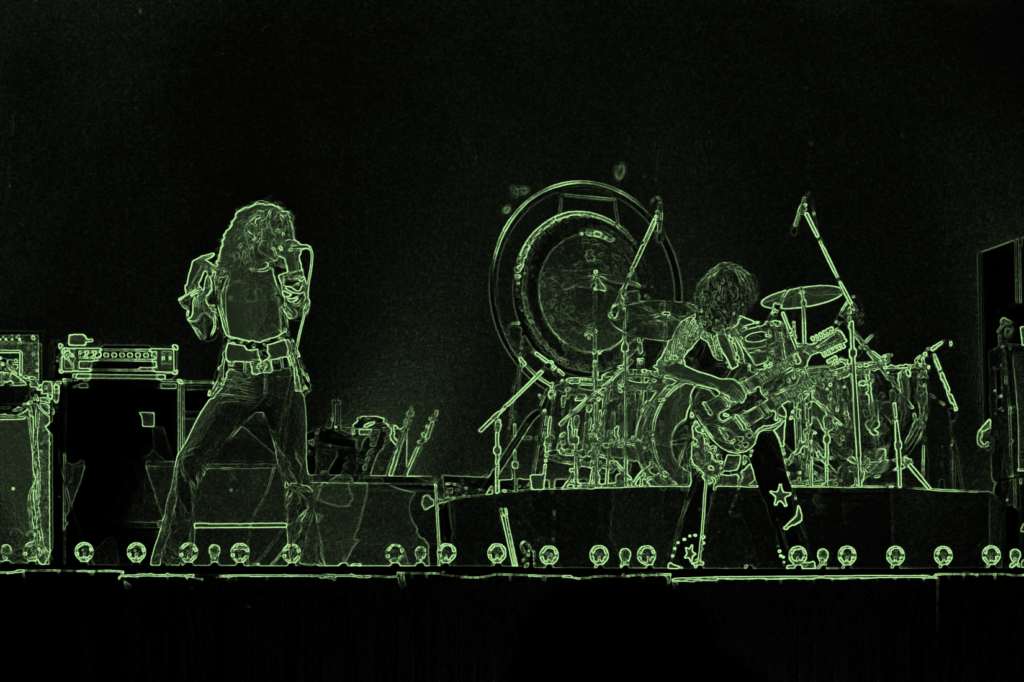 I’ve moderated enough focus groups among Classic Rockers to know that while Led Zeppelin, the Who, Pink Floyd, and Tom Petty are the soundtracks of their lives, they are really members of a tribe. Some of these fans are conservative, others are liberal. Some have white collar jobs, while others are factory rats. Some are urban dwellers, while others live way out in the sticks. But they share values and beliefs that transcend their socioeconomic status.
I’ve moderated enough focus groups among Classic Rockers to know that while Led Zeppelin, the Who, Pink Floyd, and Tom Petty are the soundtracks of their lives, they are really members of a tribe. Some of these fans are conservative, others are liberal. Some have white collar jobs, while others are factory rats. Some are urban dwellers, while others live way out in the sticks. But they share values and beliefs that transcend their socioeconomic status.
And some of their youngest listeners – born after much of this music was released – are core fans. They may have missed the ’60s and ’70s, but they listen to Classic Rock stations to feel those moments. And in many cases, they are more purist about the music than their parents (and grandparents) who grew up with the stuff.
Similarly, public radio listeners. After focus groups end, respondents who were perfect strangers two hours earlier, are almost always gathered in the parking lot, animatedly discussing many of the key issues of the moment. Public radio isn’t just about the news and quirky storytelling. Its radio stations are based on a meaningful series of core values, shared by stations in Orlando and Oklahoma City. Many programmers still carry around laminated “core values cards” in their wallets and handbags.
And lifestyle is what binds Alternative fans together. Or at least it used to. You may know me as “the Classic Rock guy,” but when we launched The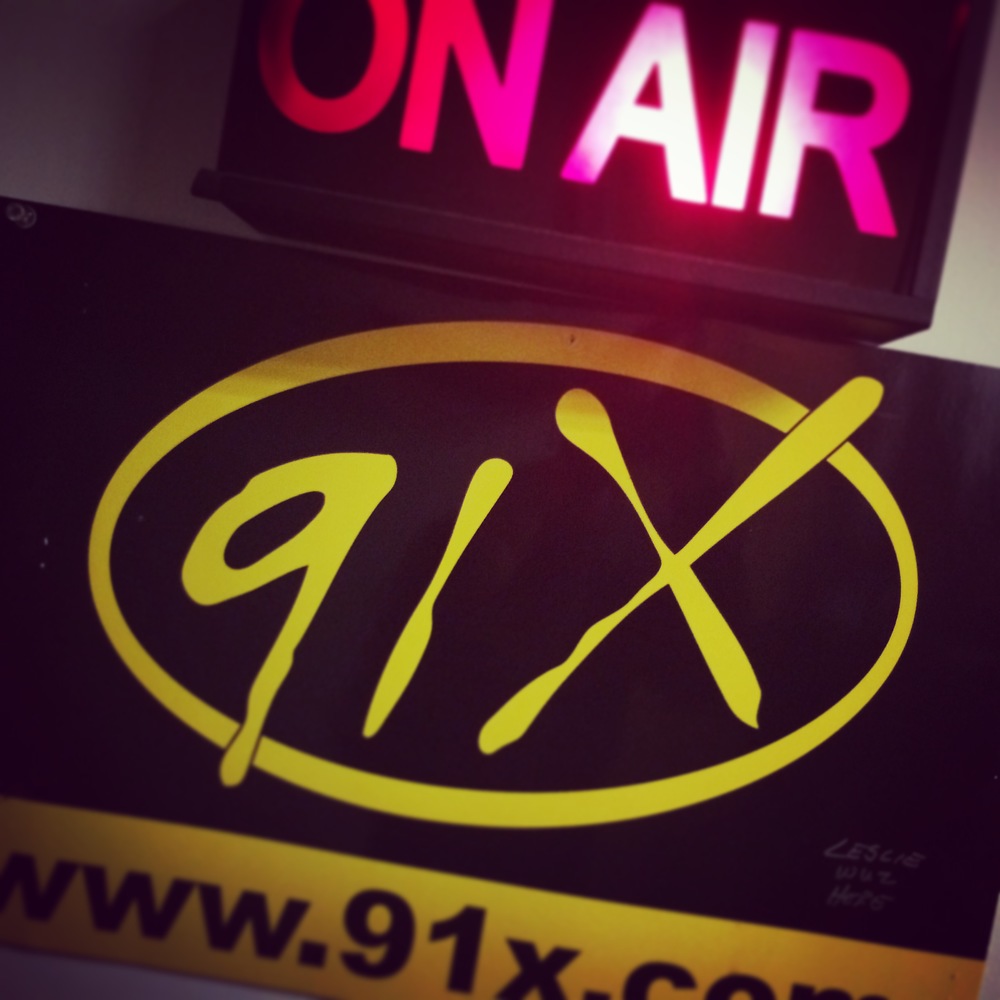 Edge in the late ’80s, our company went to school on the format…and the lifestyle. My education started at 91X and eventually stretched to brands like Live 105, The End, KNRK, X96, and many others. Working with programmers who “got it” – like Max Tolkoff, Richard Sands, Mark Hamilton, and others gave me the necessary perspective about how these stations needed to exude lifestyle, attitude, and vibe – yes, elements that may be difficult to research, but the audience hears them all the same.
Edge in the late ’80s, our company went to school on the format…and the lifestyle. My education started at 91X and eventually stretched to brands like Live 105, The End, KNRK, X96, and many others. Working with programmers who “got it” – like Max Tolkoff, Richard Sands, Mark Hamilton, and others gave me the necessary perspective about how these stations needed to exude lifestyle, attitude, and vibe – yes, elements that may be difficult to research, but the audience hears them all the same.
In the many focus groups I moderated, listeners rarely agreed about what was “Alternative.” In fact, many disliked the name, saying it failed to describe the essence of what the mindset was all about. The great stations were about being different, a little dangerous, and not afraid to fail. And they always had the ability to laugh at themselves.
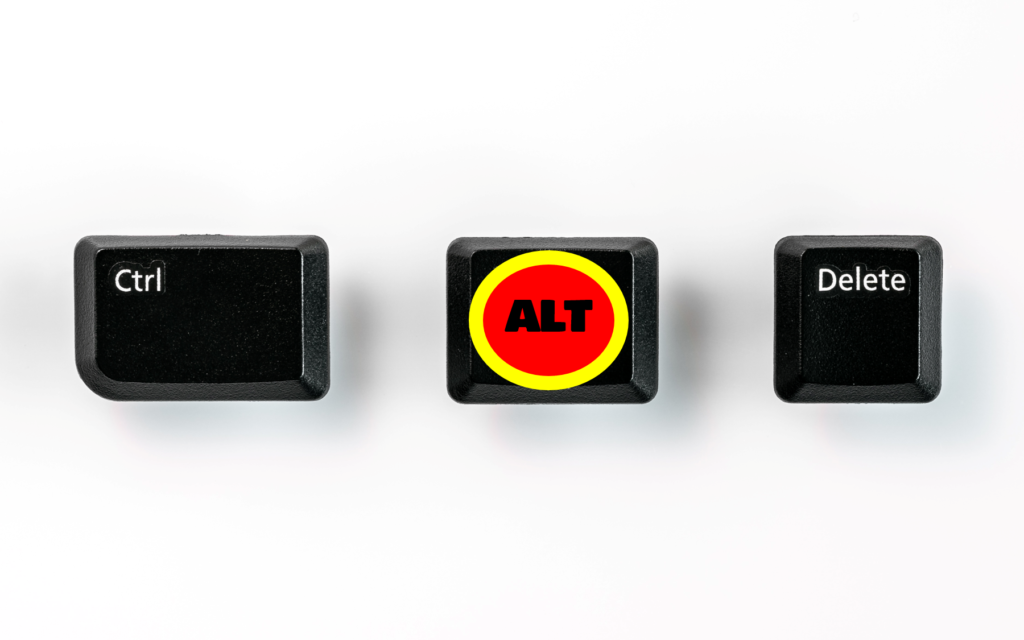 These days, many stations that brand themselves as ALT have frittered away the people and the elements that rounded out and accentuated that lifegroup in order to simply be about the music.
These days, many stations that brand themselves as ALT have frittered away the people and the elements that rounded out and accentuated that lifegroup in order to simply be about the music.
Maybe you can mail in some formats. But not this one.
When radio stations are on their respected games, they become a sort of audio meeting place where likeminded fans can come together.
This is part of why we’re seeing more social media groups – the ones Facebook is actively promoting – form around or as a result of radio stations.
People want to hang out with others who share their values and attitudes – and oftentimes, these groups transcend the fans who are into Lynyrd Skynyrd, Billie Eilish, Blake Shelton, or Elvis Presley.
When radio leans into lifestyle and reflects it back to their audiences, rather than simply defining sorting parameters on music tests, their chances of success over the long haul are so much better.
No doubt about it. Radio has gotten harder. But it’s less about all the digital competition than most think.
It is more about being about audience lifestyles and tribes, and serving as a cultural gathering place for those folks.
Yes, that takes more work, effort, and investment. You cannot run those stations “lean.” And when you start burning the furniture, fans can smell the fire.
Look at the stations on top of the ratings heap in most markets. Chances are, they are far more about their lifestyles than their genres. They are far more than just “playing the hits.”
Yes, they are the ones with the big Net Promoter Scores.
They are connecting with audiences in ways other media cannot.
After all, that’s what radio has always been about.
- What Is It With Female Robot DJs? - April 30, 2025
- Why “Dance With Those Who Brung You” Should Be Radio’s Operating Philosophy In 2025 - April 29, 2025
- The Exponential Value of Nurturing Radio Superfans - April 28, 2025




This thought piece underscores your brilliance at dissecting a problem that is going unaddressed by the ownership of many stations. The lemmings are running and heading toward a cliff. Sadly. Well done, Fred..
Much appreciated, Mike. I just got into one of those moods. You can relate, right? 🙂
Radio stopped investing, and allowed the industry to atrophy. Think they have been seeking new talent and ideas for the last 20 years? Think again. They’ve been outhustled by countless competitors, who’ve respected employees’ visions as well as pocketbooks. Internships stuffing envelopes, combined with an implied arrogance that “everyone wants to be in this business” gave an overwhelming word of mouth vibe that especially corporate radio wasn’t going anywhere. I watched really creative, bright young people either veer off into NPR affiliates, or out of radio altogether. It’s never too late, but the industry needs a serious blood transfusion. The tough part about the Kat Corbett news is that she was just the kind of creative, challenging spirit that the industry needs more of, not less. Radio just happened to pull her in, but her talents will find other places to thrive.
There is no question, Tai, that it’s truly heartbreaking when the business manages to lose a true fan and champion of the medium. Kat will do well in her next endeavor, but radio will be hard-pressed to replace her and those who leave it all on the field.
HUGE! Thank you, Fred. As long as there’s excellent music curation there will be radio.
Thanks much, Clark.
Of late, I am a big fan of seeing stations “create” their own farm team of younger persons who learn from the older ones. So much has been forgotten about “personality radio” from young DJ’s being forced to regurgitate liner cards that things like “show prep” are being lost on many, other than morning shows.
I wish I could think of more places where this is happening. At some of the best rock stations, the intern demand is still strong. But not enough stations are thinking about their “succession plans.”
My grandkids (in their 20s) sure don’t know much about radio–no interest, I’ve asked–and my daughter (in her 50s) is pretty vague about it, too. Without their ears, all the “lifestyle” discussion is moot. I think radio’s best hope for the future would be the idea floated in a blog post last month: Even though the main channels have ossified, give the HD2s and HD3s to the youngsters with carte blanche to create something they and their cohorts want to hear. Give ’em a crash course in what will get FCC to yank the license, of course, but beyond that the sky’s the limit. This would give radio a fighting chance (and listeners a reason to obtain HD Radio receivers).
Keep repeating that mantra, John. Eventually, someone’s going to do this.
As an early founder of the format (89X), all I can say when I hear these stations is “ Alt my ass”.
Right there with you. The format has lost its way. Thanks, Greg.
Lament the death of radio if you will, but realize it’s more than just “radio”. It’s mass communication. It’s broadcasting – from one to many. Radio got all messed up when it was said PPM needs 2 stop sets and radio said “okay, let’s make them 9 minutes long each”. Radio got all messed up when someone figured out that digital delivery could be used to cut staff and centralize content.
Broadcasters (especially the bigger companies) are trying to hug their investors. I’m sure we all know what it takes to make a “great” station-a “great” station. It’s kinda like politics, isn’t it? Once the almighty dollar got involved, common sense went out the window.
Too bad the ROI isn’t what it used to be, because the folks with the real money (think Musk and Bezos) would be all over mass media. Whether it be podcasting, streaming, or transmitters and towers, right now it’s a big ol’ cluster of horrendousness.
People (like you and I) who comment every day can see what the answers are, but it seems that even the upper echelon of the content-oriented minds can’t find our way to making the money people understand what an actual investment is.
Dave, we know that money – profits and losses, ROI, EBITDA – drive the business. They always have. But the earliest broadcasters inherently knew that in order to make your numbers – consistently, year after year, from one owner to another – it is about the bets you make on people and content. When that compass breaks, you get to a point like the one we’re at now. Thanks, Dave.
With respect to the point about survivor stations being great radio stations that invest in great content – the same can be said for newspapers: There’s no more embattled media mode than newspapers – Yet, the great newspapers thrive – New York Times, WaPo, Boston Globe… At the top of their game and doing well, still…
“Still” is right, but you raise a good point. And like with newspapers, there are fewer great radio stations that we’d hope for. Thanks, Bruce.
Ed Christian — always focusing on what doesn’t matter.
This was one of your best posts. Radio abandoned people under 25 before they abandoned radio and the sanitization/homogenization of Alternative is emblematic of a bigger problem – radio is systematically abandoning everything that people like best about it.
The idea that this problem can be solved by more consolidation or name changing is laughable. How many of the people running radio companies of any size have worked at a radio station in the past 40 years? What percentage of radio’s revenue in the top 50 markets is run by people whose fathers bought them the company. Looking for something new to call radio? Consider “Daddyo”.
I really lament what a horrible business radio has become. Shame on all of them who did this to a once thriving, creative innovated industry that had real brands and fans. This is serious – if the top people at every radio company had to spend 2 years in sales at one of their clusters, they’d experience first had what “POSes” their properties have become. Maybe then they’d have a clearer picture of what radio needs to revive.
Bob, you may be finally getting to me. 🙂
Clearly, there are realities that have to be faced, like the “next gen” situation, where the car is headed, and whether the consolidation of talent and other services will keep the industry afloat or hasten its demise.
Thanks for the bringing your passion to this blog, Bob.
(sniff)I love you man…
🙂